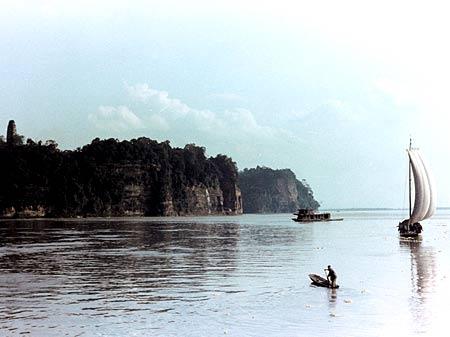
 |
| Mt. Emei |
Mt. Emei is one of “the Four Renowned Buddhist Mountains of China.” Buddhism and its numerous temples built there have brought the mountain a lot of mysterious elements. Religious culture, especially Buddhist culture, is the main part of Mt. Emei’s historical culture, and the buildings, statues, instruments, ceremonies, music and paintings of Mt. Emei all have strong religious culture characteristics. There are many temples standing on Mt. Emei, of which, the most renowned are the “Eight Great Temples on the Golden Top” including the Baoguo Temple and Wannian Temple.
The Leshan Giant Buddha is located on the Xiluan Peak on the eastern side of Mt. Emei, and was called the “Giant Maitreya” and “Jiading Buddha” in ancient times. The carving of the Buddha statue started in the Kangyuan first year (713) and took 99 years in total. The Buddha leans on the mountain and faces the rivers, and is the largest cliff statue in the current world. It is usually described as “the mountain is a Buddha; the Buddha is a mountain.” The Buddha is a sitting Maitreya Buddha facing west. It is 71 meters high and has a very calm expression on its face. The carving is delicate, the outline is natural and smooth, the body proportion is proper, and the entire statue looks splendid. It reflects the magnificence of the prosperous Tang Dynasty culture. On the southern and northern walls of the Buddha, there are also over 90 stone statues from the Tang Dynasty, and many of them are excellent works.


















 Wild Siberian tiger kills cattle in NE China
Wild Siberian tiger kills cattle in NE China


![]()
